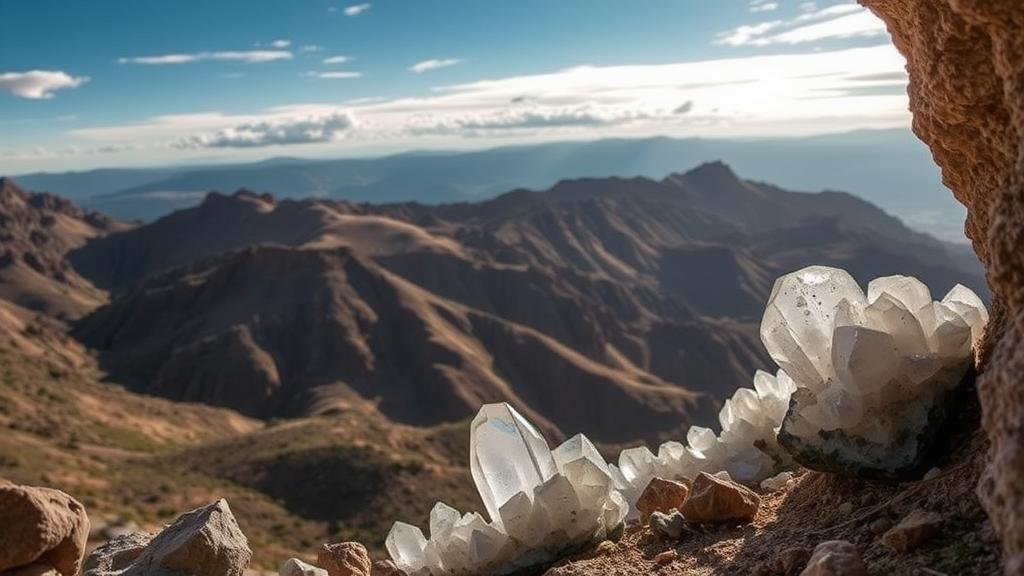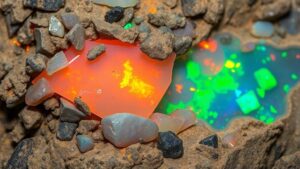Hidden Crystal Valleys: Unearthing Quartz and Other Treasures in Remote Landscapes
Hidden Crystal Valleys: Unearthing Quartz and Other Treasures in Remote Landscapes for Rockhounds and Mineral Collectors
For rockhounds and mineral collectors, the allure of discovering hidden crystal valleys brimming with quartz and other precious minerals is hard to resist. These secluded geographic formations often hold a wealth of treasures waiting to be unearthed. This article explores how to locate these valleys, understand their geological significance, and safely collect stunning specimens.
The Geology of Crystal Valleys
Crystal valleys are often formed through complex geological processes involving volcanic activity, sedimentation, and metamorphism. Typically located in remote mountainous regions, these valleys may be homes to significant mineral deposits. One of the primary minerals found in these areas is quartz, which comprises approximately 12% of the Earth’s crust. Notably, quartz can form in various colors and shapes, resulting in distinct crystal forms such as amethyst and citrine.
Identifying Promising Locations
Finding hidden crystal valleys involves a combination of research and exploration. Consider these strategies for identifying potential mining locations:
- Consult geological maps: Look for formations labeled as metamorphic or igneous, indicating potential mineral deposits.
- Join local rockhounding clubs: Engaging with seasoned collectors can provide invaluable insights about hidden valleys and sites.
- Use online forums and databases: Websites like Mindat.org and Rockhounding.com feature user-generated content detailing specific locations and their mineral richness.
Tools of the Trade
Equipping yourself with the right tools is crucial for a successful outing. Standard mineral collecting gear might include:
- A rock hammer for breaking apart rocky surfaces.
- A sieve to filter smaller rocks and minerals.
- Field guides for identifying minerals on-site.
- Protective clothing and safety glasses for personal safety.
Collecting Techniques
Effective collecting requires more than just the right tools; it also involves techniques that ensure the preservation of the surrounding environment as well as yourself. Here are some essential methods:
- Surface collecting: Begin by examining loose material on the surface before digging, which can often yield visible crystals.
- Digging with care: When excavating, be gentle to avoid breaking nearby specimens. Use your hands or a small trowel to unearth treasures without extensive damage.
- Staying organized: Keep your collected specimens categorized in separate bags to prevent breakage and confusion.
Safety Considerations
Rockhounding in remote areas can come with inherent risks. Safety should always be a top priority. Some important measures include:
- Bring sufficient water and snacks to stay hydrated and energized while exploring.
- Wear sturdy hiking boots and gloves to protect against cuts and falls.
- Inform someone of your location and expected return time.
The Environmental Impact
While collecting minerals can be a rewarding hobby, it’s essential to remain conscious of the environmental impact. Rockhounds have a responsibility to:
- Leave no trace: Ensure that the area is left as you found it, minimizing disruption to local flora and fauna.
- Follow legal guidelines: Research local regulations regarding mineral collecting, as some areas may require permits or have restrictions.
- Practice sustainable collecting: Only take what you can carry ethically. Over-collecting can deplete local resources.
Real-World Applications and Benefits
Collecting minerals, particularly quartz, has various applications beyond decorative uses. For example:
- A quartz crystal can be used in electronics due to its piezoelectric properties, making it vital in smartphone technology.
- Collecting can also promote education, increasing awareness about geology and environmental conservation.
Actionable Takeaways
Hidden crystal valleys present a fascinating opportunity for both beginner and experienced rockhounds. Remember to:
- Conduct thorough research before venturing out.
- Equip yourself with the proper tools and gear.
- Prioritize safety and environmental considerations during your collecting expeditions.
Whether you’re looking to add to your collection or discover the thrill of the hunt, these remote landscapes offer an unparalleled adventure, fostering an enduring appreciation for the natural world and its incredible treasures.



